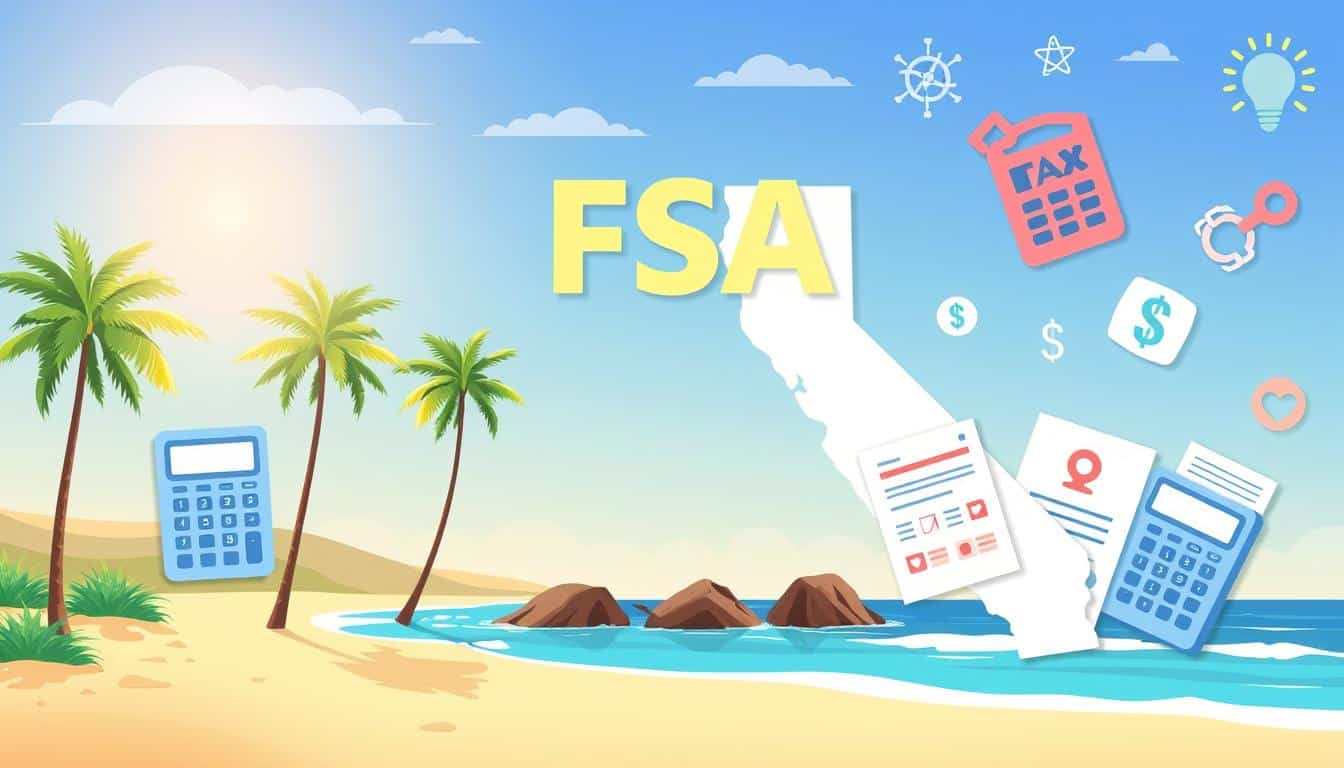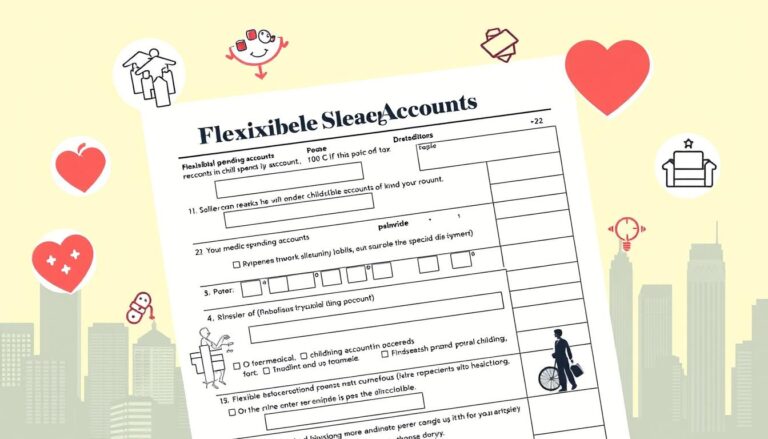As tax time comes around, you might ask, “Can I deduct my Flexible Spending Account (FSA) in California?” The answer is a bit tricky. FSAs have many benefits, but figuring out California’s FSA tax deduction rules is complex. We’ll explore the details of state and federal taxes and FSA deductions together.
Key Takeaways
- The 2021 contribution limit for FSAs is $2,750.
- Employers may offer carryover features or grace periods for unused FSA funds.
- HSAs provide a triple tax advantage, distinct from FSAs.
- The CARES Act allows FSAs to be used for over-the-counter medications without a prescription.
- Understanding California state income tax and FSA deduction rules is essential for maximizing tax benefits.
Understanding Flexible Spending Accounts (FSAs) and Their Tax Benefits
Flexible Spending Accounts (FSAs) help you save money on healthcare costs. They have tax benefits that make them a great choice for employees. In California, you can put up to $3,050 into an FSA each year. You can also roll over up to $610 to the next year.
What is an FSA?
An FSA lets you set aside money before taxes for healthcare costs. This includes medical, dental, and vision expenses. By doing this, you save on federal taxes because your income is lower.
In 2023, you can put up to $3,050 into your FSA. This limit goes up to $3,200 in 2024. But remember, you must use the money or lose it due to the “use it or lose it” rule.
Federal vs. State Tax Implications
FSAs have big benefits, but their tax treatment varies by level. At the federal level, your FSA contributions aren’t taxed. But in California, there are specific rules to know about.
In California, you can use your FSA for many medical expenses. This includes things like prescription drugs, glasses, and dental care. Make sure to file your claims by March 15 of the next year to avoid losing any money.
Starting January 1, 2024, California lets you roll over up to $610 from the previous year. This gives you more flexibility in planning your healthcare budget.
To sum up, FSAs save you money at both federal and state levels. But, it’s important to know California’s specific rules. Understanding FSAs can help you save a lot and manage your medical expenses better.
Is FSA Tax Deductible in California?
Thinking about is FSA tax deductible in California can be complex. Contributions to Flexible Spending Accounts (FSAs) are made before taxes, lowering your taxable income. But, California has its own rules that differ from federal ones, making it key to know these for state residents.
In California, how FSAs work is different from the federal rules. You save about 30% on FSA contributions federally, but California still taxes your income. You can choose up to $3,050 for a Health Care FSA in 2023, which fits California’s tax rules.
There’s also a carryover option of up to $640 to the next year, based on your plan. But remember, FSA contributions are for the tax year you choose and can’t be used in later years for taxes.
Looking into state tax implications for FSA in California, remember the tax credits for dependent care. But, don’t claim the same expenses twice. If you use your FSA for dependent care, you can’t claim it again for the Child and Dependent Care Expenses Credit. California limits expenses at $3,000 for one dependent or $6,000 for two or more, with credits claimed on Form 3506 when you file.
Changes in your family, like getting married or having a child, let you adjust your FSA contributions. It’s up to you to keep healthcare and dependent care FSA funds separate. The rules don’t allow stockpiling eligible items for later use.
In short, while FSAs offer big tax benefits federally, California has its own rules. Knowing these lets Californians use FSAs well, getting the most out of their pretax benefits while dealing with the state’s taxes.
Conclusion
You’ve explored the complex world of Flexible Spending Accounts (FSAs) and their tax effects in California. Knowing how California’s tax laws work with FSA deductions can lead to big savings for California residents. By putting in the 2024 max of $3,200 into an FSA, you could save about $680. This is thanks to the federal income tax and FICA payroll tax benefits.
FSAs do more than cut your taxable income. They also help you manage healthcare costs better because of the “use-it-or-lose-it” rule. This rule encourages you to buy healthcare items wisely. It’s important because almost 40% of Americans delay medical care because of costs. California’s healthcare costs are rising faster here than in the rest of the country.
It’s important to keep an eye on changes in FSA rules and tax laws in California. You should stay updated on things like rollovers, employer contributions, and tax reform. Being informed lets you use your FSA better for healthcare planning and saving on taxes. So, act now and use your FSA to plan for healthcare and save on taxes.








